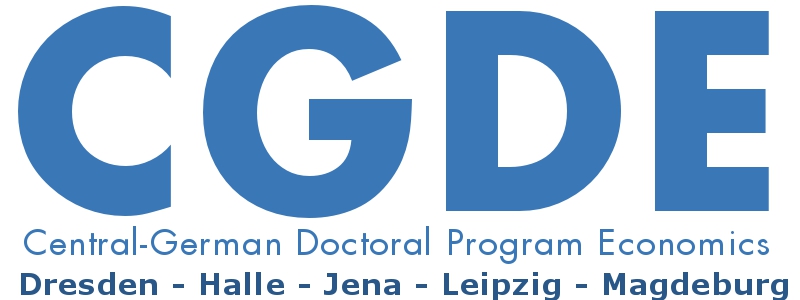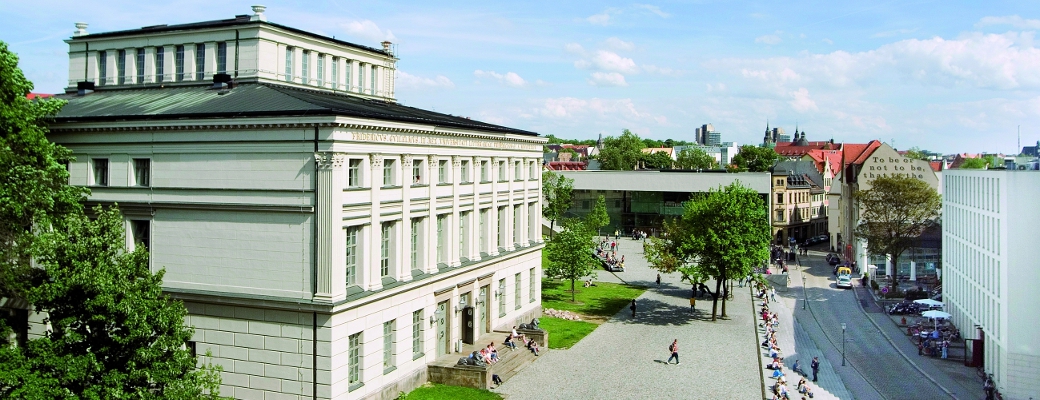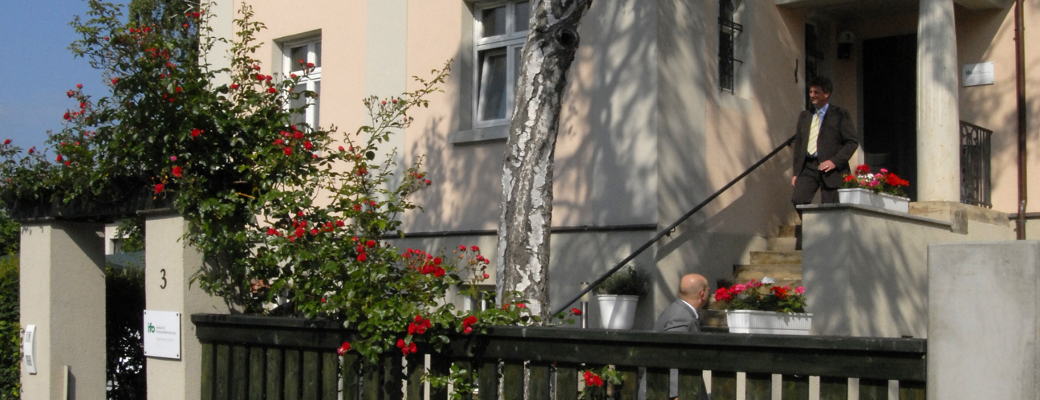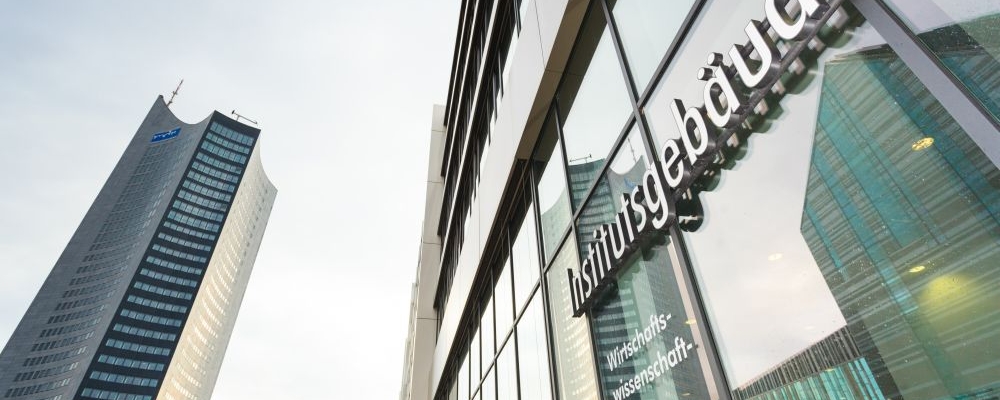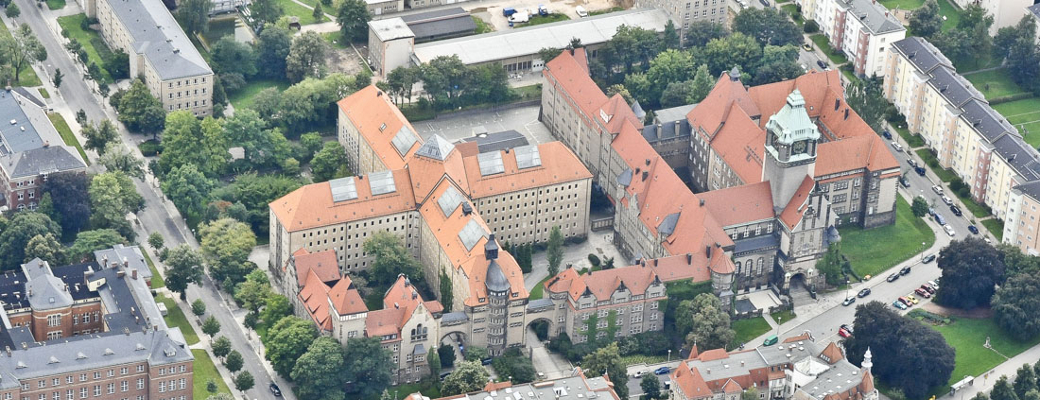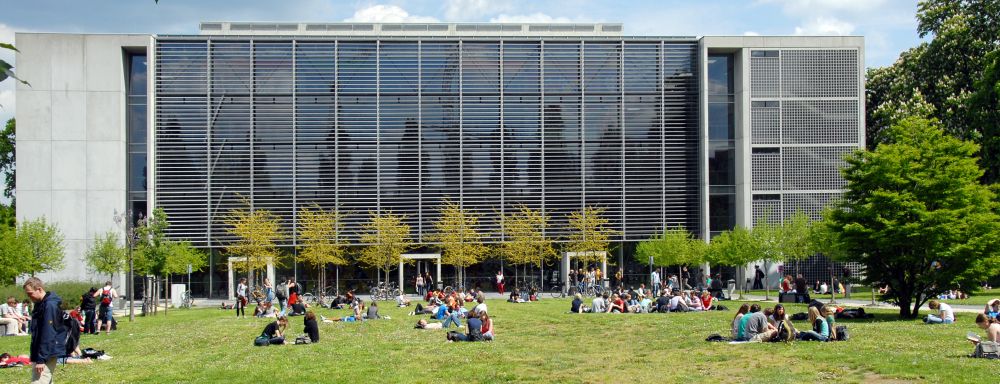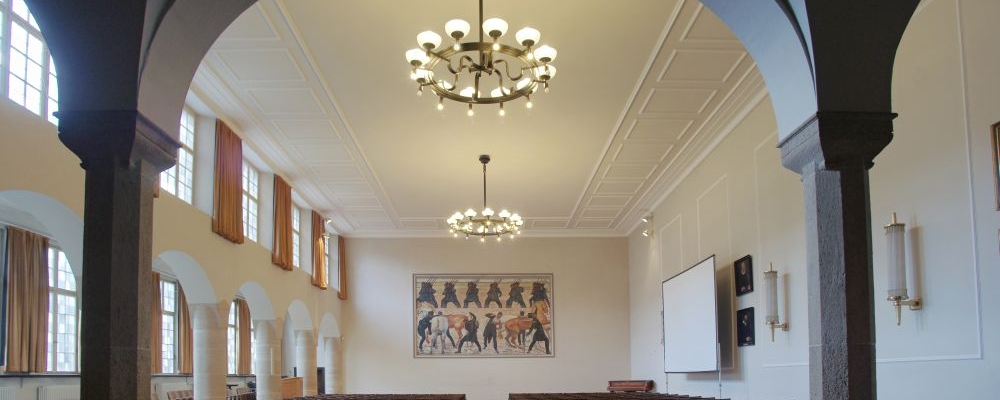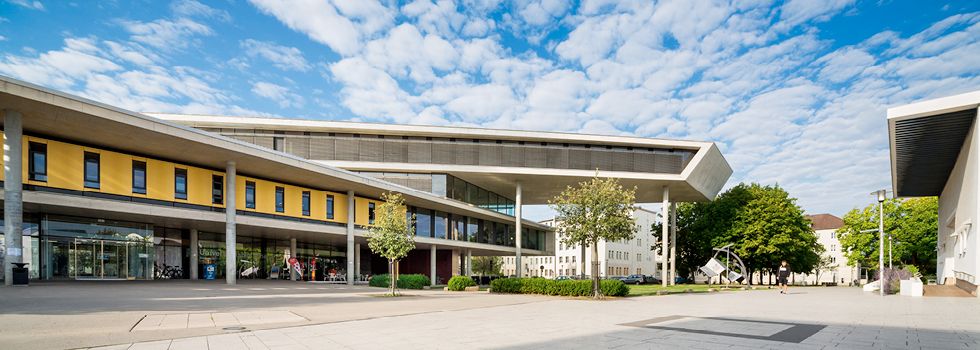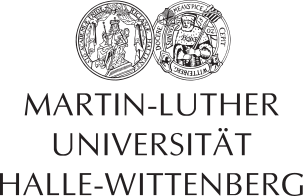Dynamic Resource Economics
Lecturer: Professor Dr Sjak Smulders (Tilburg University and University of Calgary)
Date: October 18-19 and October 24-26, 2018
Venue: Leipzig University, Faculty of Economics and Management Science, Grimmaische Straße 12, Institutsgebäude, Room I 411
Registration: until October 1, 2018 via email: sprenger@wifa.uni-leipzig.de. The course is designed for at most 25 participants.
Announcement: pdf
Format
Five four-hour lectures and five two-hour tutorials (schedule see below).
Course grade
Based on active participation during the tutorials (30%) and on a final assignment that builds on the tutorial material (70%). The assignment is due on November 15, 2018.
Topics
This course deals with advanced topics in environmental and resource economics, with an emphasis on dynamics and growth, applied to global environmental problems including climate change.
Central themes in the course are the dynamic aspects of environmental policy and the interaction between environmental policy and technological change. The course uses natural resource theory (to study the dynamics of resource use) and growth theory (to study the link with technology and the long-run general equilibrium effects).
We try to answer questions like the following:
- What is the optimal carbon tax?
- Should green technologies be subsidized?
- Should we mainly rely on carbon taxes or on green subsidies?
- When are growth and environmental improvement compatible?
- Will we grow out of pollution? What drives the Environmental Kuznets Curve?
- How can we prevent “carbon leakage”?
- Which architecture of international negotiations will enhance cooperation in global environmental agreements?
In the course we will see a mix between “fundamental robust insights” and “new challenges in the literature”, so that the course might be interesting both for the student with a general interest in the field and for the student who plans to do (theoretical) research in the field.
Required background
The course employs standard mathematical tools like calculus, optimization, optimal control, phase diagrams, differential equations, and integration.
Time Schedule
Thursday, 18th
8:30 – 10:00 (2 x 45 min)
Break: 30 min
10:20 – 12:00 (2 x 45 min)
Break: 75 min
13:15 – 14:45 (2 x 45 min) Tutorial
Friday, 19th
9:30 – 11:00 (2 x 45 min)
Break: 30 min
11:30 – 13:00 (2 x 45 min)
Break: 90 min
14:30 – 16:00 (2 x 45 min) Tutorial
Wednesday, 24th
9:00 – 10:30 (2 x 45 min) (Room I 411)
Break: 30 min
11:00 – 12:30 (2 x 45 min) (Room I 411)
Break: 60 min
13:30 – 15:00 (2 x 45 min) Tutorial (Seminar room 16)
Thursday, 25th
8:30 – 10:00 (2 x 45 min)
Break: 30 min
10:20 – 12:00 (2 x 45 min)
Break: 75 min
13:15 – 14:45 (2 x 45 min) Tutorial
Friday, 26th
9:30 – 11:00 (2 x 45 min)
Break: 30 min
11:30 – 13:00 (2 x 45 min)
Break: 90 min
14:30 – 16:00 (2 x 45 min) Tutorial/ExamPreparation
Preliminary reading list
(*The asterisks indicate main articles)
1. Climate policy and depletion of natural resources: Too much oil?
a) Non-renewable resources
- *Heal, G.M. (1976), “The relationship between price and extraction cost for a resource with a backstop technology”, Bell Journal of Economics 7 (Autumn), 371-378.
- Lin, C. and G. Wagner. 2007. “Steady state growth in a Hotelling model of resource extraction” Journal of Environmental Economics and Management 54, 68-83.
- Hart, Rob and Daniel Spiro. 2011. “The elephant in Hotelling’s room” Energy Policy 39, 7834-7838.
- Andre, F.J. and S. Smulders. 2014. Fueling growth when oil peaks: Directed technological change and the limits to efficiency. European Economic Review 169, 18-39.
b) The green paradox, announcement effects, and implementation lags.
- Sinn, H.-W., 2008. “Public policies against global warming: a supply side approach.” Int Tax Public Finance 15: 360-394.
- Gerlagh, Reyer. 2010. “Too much oil.” CESifo Economic Studies, doi:10.1093/cesifo/ifq004
- *Van der Ploeg, F., and C. Withagen. 2012. “Is there really a green paradox?”. Journal of Environmental Economics and Management 64, 342-363.
- Michielsen, Thomas O., “Brown backstops versus the green paradox,” Journal of Environmental Economics and Management, 2014, 68 (1), 87 – 110.
- Van der Werf, Edwin en Corrado Di Maria, “Imperfect Environmental Policy and Polluting Emissions: The Green Paradox and Beyond,” International Review of Environmental and Resource Economics, March 2012, 6 (2), 153–194.
- Smulders, Sjak, Yacov Tsur en Amos Zemel, “Announcing climate policy: Can a green paradox arise without scarcity?,” Journal of Environmental Economics and Management, 2012, 64 (3), 364–376.
- Di Maria, C., E. van der Werf and S. Smulders. 2017. “Climate Policy with Tied Hands: Optimal Resource Taxation under Implementation Lags” Environmental and Resource Economics 66(3), 537-551.
- Di Maria, Corrado, Ian Lange en Edwin van der Werf, “Should we be worried about the green paradox? Announcement effects of the Acid Rain Program,” European Economic Review, 2014, 69 (C), 143–162.
- Lemoine, Derek, “Green Expectations: Current Effects of Anticipated Carbon Pricing,” The Review of Economics and Statistics, July 2017, 99 (3), 499–513.
- Harstad, Bard. 2012 “Buy Coal! A Case for Supply-Side Environmental Policy” Journal of Political Economy 120, 77-115. [Also available at http://www.kellogg.northwestern.edu/faculty/harstad/htm/deposits.pdf]
c) Biofuels and Renewables
- *Van der Ploeg and Withagen. “Growth, Renewables and the Optimal Carbon Tax” International Economic Review 55 (1) 283-311.
- Hassler, J. and H.-W. Sinn (2012). “Fossile Episode” CEPR discussion paper 9256.
- Ujjayant N. Chakravorty, Marie-Helene Hubert and Beyza Ural Marchand, 2012. „Food for Fuel: The Effect of U.S. Energy Policy on Indian Poverty“ Available at: http://works.bepress.com/chakravorty/3
2. Environmental policy and technology
- *Goulder, L. and K. Mathai. 2000. “Optimal CO2 abatement in the presence of induced technological change”, Journal of Environmental Economics and Management 39, 1-38.
- *Requate, T. and W. Unold (2003) “Environmental policy incentives to adopt advanced abatement technology: Will the true ranking please stand up?” European Economic Review 47, 125-146.
- Smulders, Sjak and Di Maria, C. and Sjak Smulders. 2017. “A Paler Shade of Green: Environmental Policy under Induced Technical Change” European Economic Review 99, 151-169.
- Grischa Perino and Till Requate. “Does more stringent environmental regulation induce or reduce technology adoption?: When the rate of technology adoption is inverted U-shaped”. Journal of Environmental Economics and Management 64(3). (2012): S. 456-467.
- Rob Hart (2018). „Rebound, directed technological change, and aggregate demand for energy.“ Forthcoming in the Journal of Environmental Economics and Management.
3. Environment and (limits to) growth
a) Limits to growth
- Aghion, Ph. and P. Howitt (2009), The economics of Growth, Cambridge MA: MIT Press. Chapter 16.
- *Brock, William A. and M. Scott Taylor (2005) “Economic Growth and the Environment: A review of theory and empirics” in Philippe Aghion and Steven N. Durlauf (eds) Handbook of Economic Growth, Volume 1B. Amsterdam: Elsevier.
- *Groth, Christian. 2007. “A New-Growth Perspective on Non-renewable Resources” in Bretschger and Smulders (eds) Sustainable resource use and economic dynamics. Dordrecht: Springer/Kluwer. Available at http://www.econ.ku.dk/okocg/Articles%20by%20Groth/Groth_2007_SUREDbook.pdf
b) Pollution-GDP dynamics (and the Environmental Kuznets Curve)
- *Brock, William A. and M. Scott Taylor. 2010. “The Green Solow Model.” Journal of Economic Growth.
- Cherniwchan, Jevan. 2012. “Economic Growth, Industrialization, and The Environment”, Resource and Energy Economics doi:10.1016/j.reseneeco.2012.04.004
- Burke M, Hsiang SM, Miguel E (2015) Global non-linear effect of temperature on economic production. Nature 527: 235 doi: 10.1038/nature15725
c) Climate disasters and growth
- *Van der Ploeg, R. and A. de Zeeuw. “Climate Tipping and Economic Growth: Precautionary Capital and the Price of Carbon”, Journal of the European Economic Association, , jvx036, https://doi.org/10.1093/jeea/jvx036
d) Sustainable development and Green accounting
- Chichilnisky, G. 1997. “What is Sustainable Development?” Land Economics 73/4, 467-491.
- *Vellinga, N. and C. Withagen 1996. “On the concept of green national income” Oxford Economic Papers 48, 499-514.
- Weitzman, M.L. 1997. “Sustainability and Technical progress” Scan J of Economics 99, 1-13.
- Weitzman, M. L. 1999. Pricing the limits to growth from minerals depletion. Quarterly Journal of Economics 114/2: 691-706.
- Smulders, Sjak (2008). “Green National Accounting” in S. Durlauf and L. Blume (eds) The New Palgrave Dictionary of Economics, 2nd edition, Palgrave MacMillan.
- Dasgupta, Partha (2009). “The Welfare Economic Theory of Green National Accounts.” Environmental and Resource Economics 42, 3–38.
- *Arrow, Kenneth J., Partha Dasgupta, Lawrence H. Goulder, Kevin J. Mumford, and Kirsten Oleson. 2012. “Sustainability and the Measurement of Wealth” Environment and Development 17, 317-353.
- *Cairns, R. and V. Martinet. 2014. “An environmental-economic measure of sustainable development” European Economic Review forthcoming.
4. Climate change and growth
a) Analytical climate models
- *Golosov, Mikhail, John Hassler, Per Krusell, Aleh Tsyvinski. 2014. “Optimal Taxes on Fossil Fuel in General Equilibrium” Econometrica 82, 41-88.
- Van den Bijgaart, I., R. Gerlagh, M. Liski. 2016. A simple formula for the social cost of carbon. Journal of Environmental Economics and Management 77: 75–94.
- Dietz, S. and F. Venmans. 2018. Cumulative carbon emissions and economic policy: in search of general principles. LSE working paper. http://www.lse.ac.uk/GranthamInstitute/wp-content/uploads/2017/11/Working-Paper-283-Dietz-Venmans_updateMarch2018.pdf
- Van der Ploeg, F. 2018. The safe carbon budget. Climatic Change 147: 47-59.
b) Directed Technical change
- *Acemoglu, D., P. Aghion, L. Bursztyn, and D.Hemous. 2012. “The environment and directed technical change.” American Economic Review 102, 131-166. [available at http://www.anderson.ucla.edu/faculty/leonardo.bursztyn/AABH_AER.pdf ]
- Acemoglu, Daron, Ufuk Akcigit, Dougas Hanley, and William Kerr. 2016. “Transition to Clean Technology.“ Journal of Political Economy, 124(1): 53-104.
- Hart, R. (2016). „Non-renewable resources in the long run.“ Journal of Economic Dynamics and Control, 71:1-20.
- *Rob Hart (2018). „To everything there is a season: Carbon pricing, research subsidies, and the transition to fossil-free energy.“ Forthcoming in the Journal of the Association of Environmental and Resource Economists.
- S. 2017. Climate Policy and Innovation: A Quantitative Macroeconomic Analysis. American Economic Journal: Macroeconomics, forthcoming. https://sites.google.com/site/stephiedfried/research
5. Trade and international agreements
- *Nordhaus, W. 2015. Climate Clubs: Overcoming Free-riding in International Climate Policy. American Economic Review 2015, 105(4): 1339–1370.
- Aichele, Rahel and Gabriel Felbermayr 2012. “Kyoto and the carbon footprint of nations” JEEM 63: 336-354.
- Marschinski, Robert, Christian Flachsland, and Michael Jakob. 2012. “Sectoral Linking of Carbon Markets: A Trade-Theory Analysis.” Resource and Energy Economics 34, 585-606.
- De Cian, E. and M. Tavoni. 2012 “Do Technology externalities justify restrictions on emission permit trading?” Resource and Energy Economics 34, 624-646.
- Di Maria, Corrado, Edwin van der Werf, 2008. „Carbon leakage revisited: unilateral climate policy with directed technical change,“ Environmental & Resource Economics, 39(2), 55-74.
- Di Maria, C., and S. Smulders. 2004. ‘Trade pessimists vs technology optimists: Induced technical change and pollution havens.’ Advances in Economic Analysis and Policy. 4(2), 7.
- Van der Ploeg, F. 2018 Political economy of dynamic resource wars. JEEM forthcoming.
